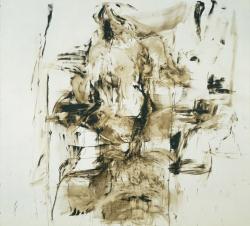
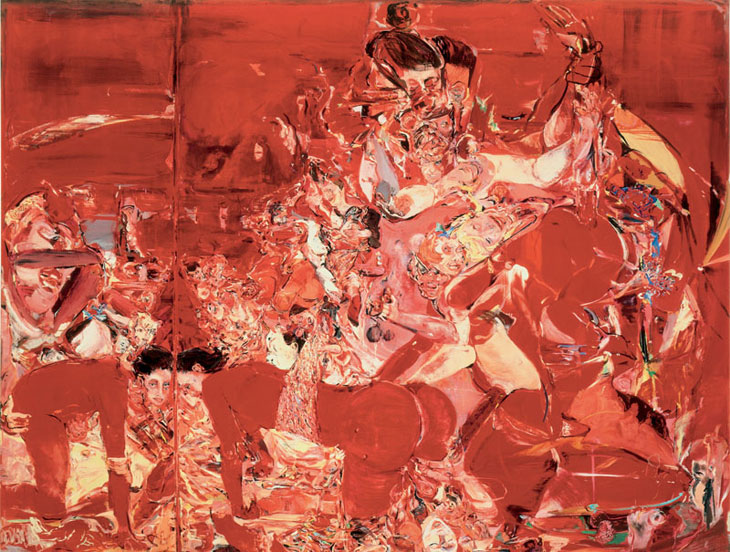
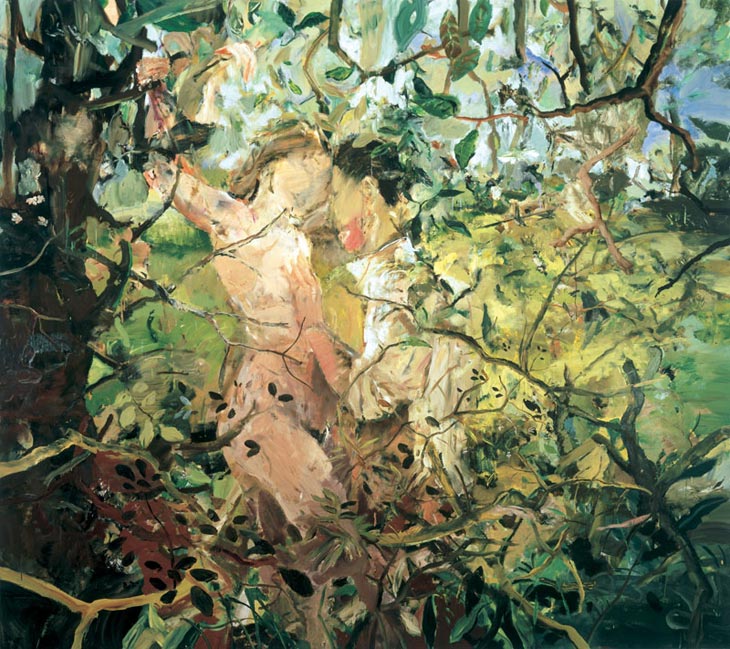
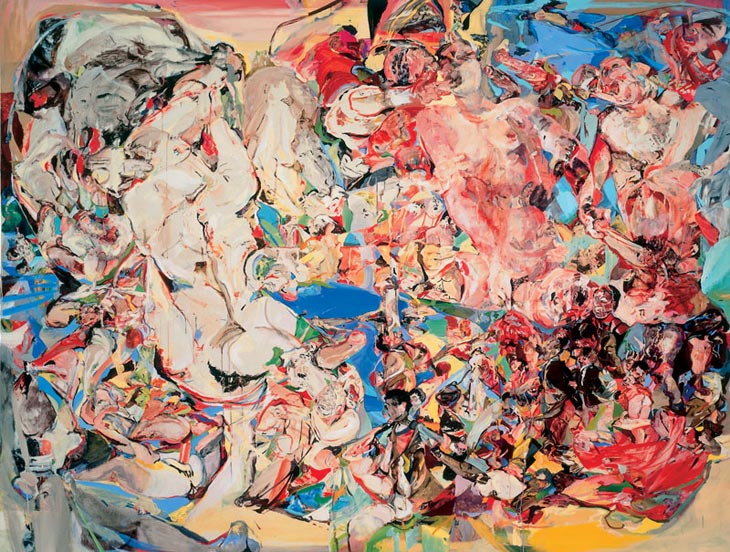
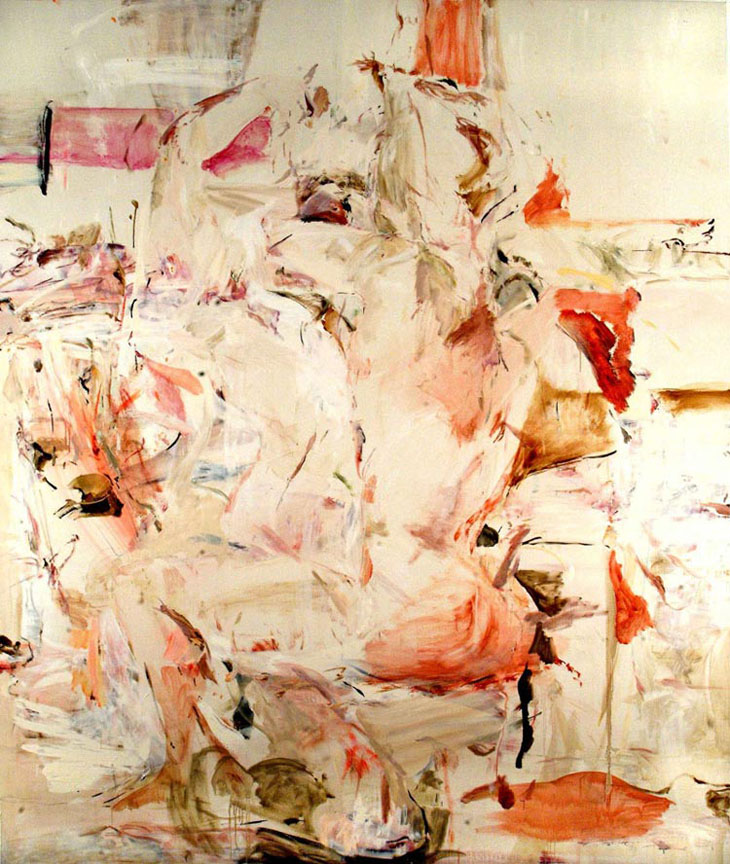
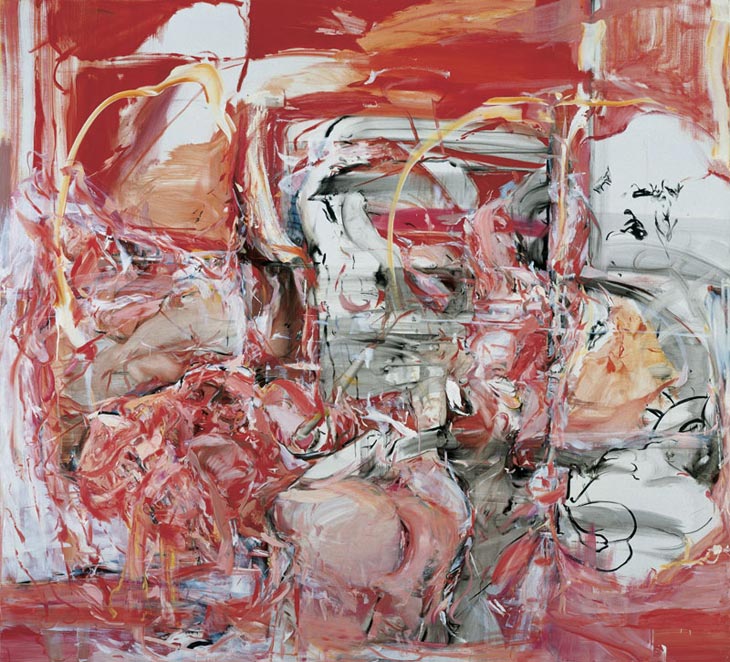
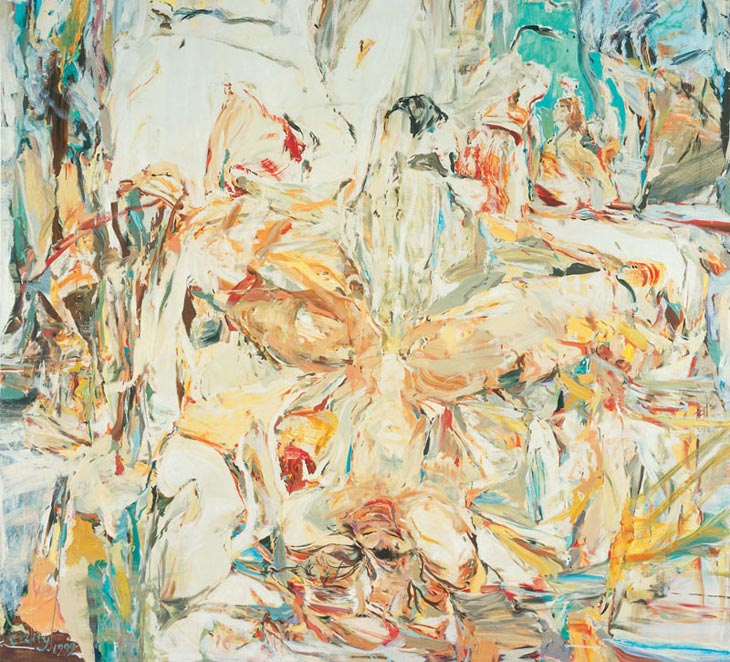
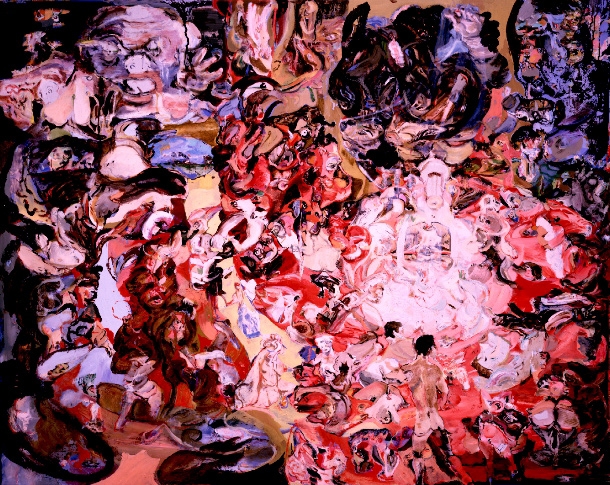
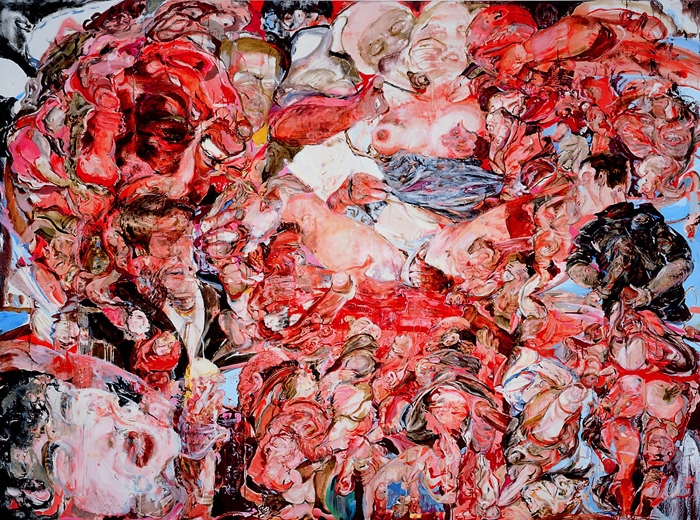
Cecily Brown
Cecily Brown’s paintings literally drip with sex. Hard, Fast and Beautiful emits a simple sophistication: wispy charcoal and white gestures, reminiscent of life drawings or underpainting, contain a more carnal impression. Cecily Brown approaches this abstraction like the aftermath of two lovers rolling around on the canvas. A highly rendered fabrication of an Yves Klein fantasy dreamed and savoured entirely from the girl’s perspective.
Named after the famous Doris Day film, this Pyjama Game has no intention of maintaining a squeaky clean image. Cecily Brown’s painting has all the fun of a screwball comedy. Delightfully innocent and sophisticated at the same time, a plot laid out in abstract: mistaken identity, sexual innuendo and glamorous design in 1950s red.
Cecily Brown’s young lovers melt into the foliage, fused into the landscape in the heat of a moment. Everything about Brown’s painting erupts with sex appeal: from the soft-porn pastel colours to the oily-wet malleability of the surface. Cecily Brown knows that desire lies in the flirtation: amid her fervent gestural abstraction, just the glimpse of suggestion is enough.
High Society reads like an F. Scott Fitzgerald orgy: little men in tails and top hats, muscle-bound millionaire hunks pulling themselves to climax, indiscernible bits of sensuous bodies, detached penises, the allusion of gossipy dinner-party crowds. Set against a lavish gold-and-blue background, Cecily Brown’s fantasy is a rich girl’s predilection – a notch in her bedpost for Cézanne and early Pollock.
Taking its title from Tennessee Williams’s play, Cecily Brown’s The Fugitive Kind is as seductive as southern gossip. Brown uses the painterliness of Abstract Expressionism to convey not only raw emotion, but a corporeal sense of connection between painting, idea and viewer. Cecily Brown capitalises on the fleshiness of her medium: paint’s ability to replicate physical sensation: and the dramatic illusion of motion. Within her voluptuous surfaces, epic fantasies spontaneously unfold, as if each brush stroke contains a dark secret: opulent, gritty and tainted with sin.
The Girl Who Had Everything is done in the fleshiest of pinks, ripe for the taking. Populated with fragments of figures as twisted and mysterious as Francis Bacon, it has all the vigour of a macho abstraction, created with a pastel decorative palette.
Cecily Brown's Night Passage has all the vigour of macho abstraction, with the pastel decorative palette of Monet’s water lilies, and a girlie reference to Georgia O’Keeffe. Amidst the entire lush-painted flourish, is the impression of a couple copulating.
